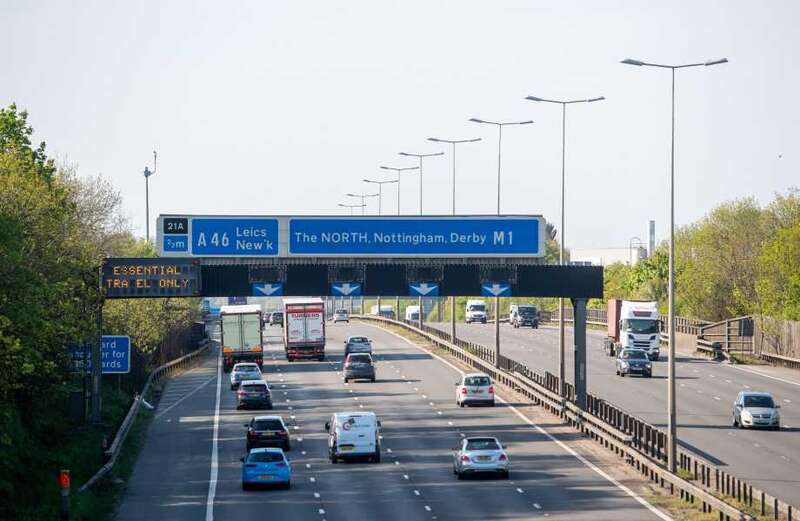DRIVERS have been left shocked after being stung by £8,000 fines every day on a smart motorway with a 60mph limit.
During the four-year trial, over 22,000 motorists were hit with speeding fines along the M1 between junction 33 and 34 near Sheffield and Rotherham.

According to the research, if all the tickets had been paid, the Government would have received over a whopping £2.25million during the period.
The cause of the fines was down to a speed camera that aggressively handed out tickets on the northbound stretch of the motorway.
It came after National Highways had trialled a reduced speed limit on the roads from 70mph to 60mph in 2020.
 Selfish drivers mount pavement outside family homes putting pedestrians at risk
Selfish drivers mount pavement outside family homes putting pedestrians at risk
The data showed a total of 119,204 fines were issued to motorists who broke all speed limits on the smart motorway as well as those who ignored lane closures between junction 30 and 35a, reports the Telegraph.
National Highways are responsible for operating, maintaining and upgrading the road network in England which includes all the major motorways going in and out of London.
Between 2022 and 2023, they handed out 2,629 fines to motorists who ignored motorway lane closures marked with a red X.
The minimum penalty for speeding is a £100 fine and three penalty points added to a driving licence.
And motorists could be disqualified if they build up 12 or more penalty points within a period of three years.
The first smart motorway scheme was used on the M42 motorway in 2006.
But there are now more than 236 miles of smart motorways in England.
However, in April last year, Prime Minister Rishi Sunak announced that the construction of new smart motorways would be banned.
This is following concerns about safety and cost.
What are smart motorways?
Smart motorways were introduced by the coalition government in 2014 in order to speed up traffic.
 Top ten reasons learners fail their driving test revealed by the DVSA
Top ten reasons learners fail their driving test revealed by the DVSA
There are three types of smart motorway in the UK - all lane running (ARL), controlled, and dynamic hard shoulder.
ARL are sections of motorway that do not have a hard shoulder.
They were introduced in 2014 with a view to controlling traffic flow and easing congestion.
Around 10 per cent of Britain's motorways are made up of them.
Instead they use specially designed Emergency Refuge Areas for motorists who get into trouble.
Controlled sections of motorway use technology to manage the flow of traffic during busy times.
Operators can vary the speed limit - with lit signs on overhead gantries - with the aim of reducing the frustrating stop-start driving conditions that often occur on normal roads.
They also activate warning signs - to alert you to traffic jams and hazards up ahead - and close lanes to allow emergency vehicles through.
Variable speed limits are enforced with automatic cameras - which run 24 hours a day, even when the limit is 70mph.
Smart motorways can also increase capacity of the road by opening up the hard shoulder at busy times.
These dynamic hard shoulder sections are operated by Highways England, a government-owned company.
It says congestion on the motorway and major road network in England costs an estimated £2billion every year, with 25 per cent of this resulting from incidents.


































